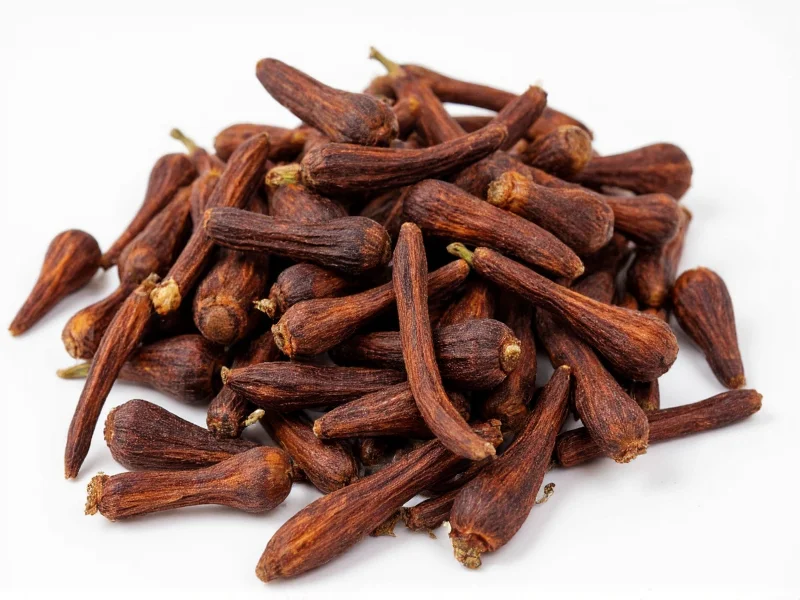When purchasing cloves in bulk, understanding quality indicators becomes crucial. Whole cloves should exhibit a rich brown color, firm texture, and pronounced nail-like shape with visible oil glands. The highest quality specimens contain 15-20% essential oil, primarily eugenol, which delivers that distinctive warm, pungent aroma. Unlike retail packages, bulk cloves allow inspection of individual pieces before purchase, ensuring you receive premium product without stale or damaged buds.
Types of Bulk Cloves Available
The global clove market offers several distinct varieties, each with unique characteristics that affect flavor intensity and culinary applications. Understanding these differences helps buyers select the most appropriate option for their specific needs.
| Variety | Origin | Key Characteristics | Best Uses |
|---|---|---|---|
| Zanzibar | Tanzania | High eugenol content (80-85%), strong aroma | Commercial extraction, robust dishes |
| Madagascar | Madagascar | Balanced flavor, moderate oil content | General cooking, baking |
| Indonesian | Indonesia | Milder flavor, larger buds | Delicate dishes, tea blends |
| Pemba | Tanzania | Premium quality, highest oil content | Specialty products, high-end cuisine |
Evaluating Quality in Bulk Clove Purchases
Assessing bulk cloves requires attention to multiple physical characteristics that indicate freshness and potency. The clove's stem attachment point should remain intact, as separated stems often indicate age or improper handling. When squeezed gently between fingers, high-quality cloves release aromatic oils and feel dense rather than lightweight and brittle.
Professional buyers use the float test to assess quality: place cloves in water—premium specimens sink vertically due to their high oil content, while lower quality cloves float horizontally or remain suspended. Moisture content should measure between 8-12%; excessive moisture promotes mold growth during storage, while overly dry cloves have lost volatile compounds essential for flavor.
Proper Storage Techniques for Maximum Shelf Life
Maintaining the quality of bulk cloves requires specific storage conditions that preserve their essential oils and prevent degradation. Unlike retail packaging which often uses permeable materials, professional storage employs oxygen-barrier containers with humidity control.
For optimal preservation, store bulk cloves in airtight glass or food-grade plastic containers away from light and heat sources. The ideal storage temperature ranges between 10-15°C (50-59°F) with relative humidity below 60%. Under these conditions, properly stored whole cloves maintain peak quality for 18-24 months. Refrigeration extends shelf life but requires careful moisture control to prevent condensation. Freezing is acceptable for long-term storage but necessitates complete thawing before opening containers to avoid moisture absorption.
Understanding Bulk Measurements and Quantities
Purchasing cloves in bulk involves different measurement systems than retail shopping. Commercial transactions typically use weight measurements rather than volume, with standard packaging options including:
- 1 kg vacuum-sealed pouches (most common for small commercial buyers)
- 5 kg food-grade plastic buckets with oxygen absorbers
- 25 kg woven polypropylene bags with inner moisture barrier
- Custom quantities for industrial food manufacturers
When converting between weight and volume measurements, note that 1 cup of whole cloves weighs approximately 110 grams. This conversion becomes essential when adapting recipes designed for retail purchases to bulk quantities. Serious culinary professionals maintain conversion charts specific to each spice they purchase in volume.
Practical Applications of Bulk Cloves
Beyond standard culinary uses, bulk cloves serve multiple professional applications that justify their purchase in large quantities. Food manufacturers incorporate them into spice blends, marinades, and processed foods where consistent flavor profiles are essential. The pharmaceutical industry utilizes clove extracts for their antiseptic properties in dental products and topical analgesics.
Home users purchasing bulk cloves often develop preservation techniques to maximize value. Creating clove-infused oils requires approximately 100 grams of cloves per liter of carrier oil, while making spiced vinegars uses a ratio of 50 grams per 750ml. For those interested in natural remedies, properly stored bulk cloves maintain medicinal properties for up to two years, making them valuable for homemade tinctures and salves.
Economic Considerations for Bulk Purchases
The cost-benefit analysis of buying cloves in bulk reveals significant savings compared to retail alternatives. On average, purchasing 1 kilogram of premium cloves costs 30-40% less per unit weight than equivalent retail packaging. However, these savings only materialize when proper storage prevents spoilage and when the quantity purchased aligns with actual usage rates.
For commercial kitchens using 200 grams weekly, a 1-kilogram purchase represents a five-week supply that maintains quality when stored correctly. Home users should calculate their annual consumption before committing to bulk quantities—most households use only 100-200 grams annually, making smaller bulk packages more practical than industrial quantities. Seasonal price fluctuations also affect purchasing decisions; prices typically drop 15-20% following harvest seasons in December-January and June-July.











 浙公网安备
33010002000092号
浙公网安备
33010002000092号 浙B2-20120091-4
浙B2-20120091-4